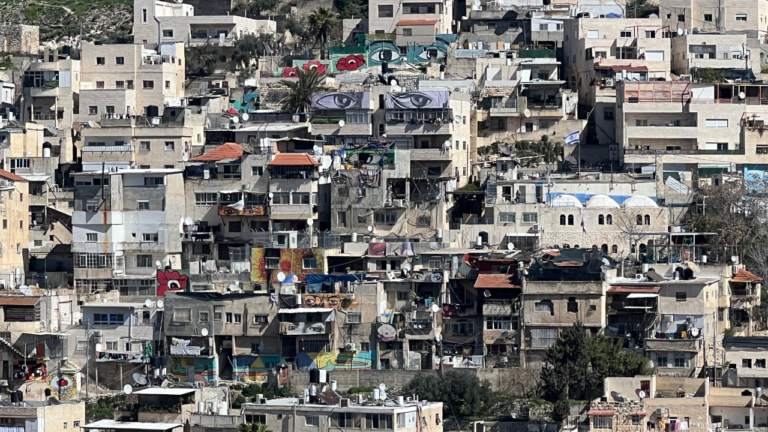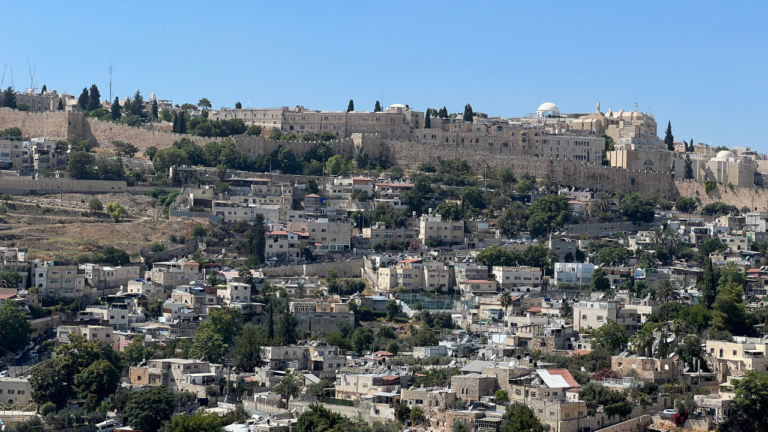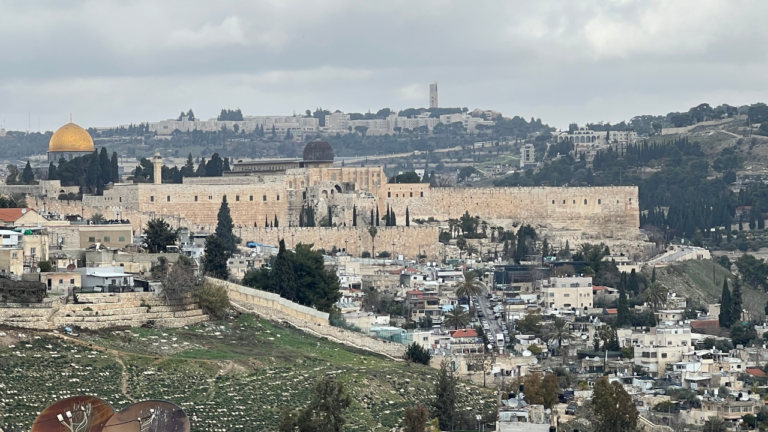Machon l’Shivtecha: The Lower and Heavenly Jerusalems Align
As Bnei Yisrael sing in praise of the great miracles of Yam Suf, they prophetically describe their future entrance to Eretz Yisrael. The Exodus story doesn’t end with Klal Yisrael’s freedom from Egyptian bondage; it continues with kabalat haTorah and entry to Eretz Yisrael, culminating with the building of the Beit HaMikdash in Jerusalem. This is why the Jewish people made several prophetic references to Yerushalayim and the holy temple. “With Your loving kindness You led the people You redeemed; You led with Your might to Your holy abode. (Shemot 15:13)” As the commentatorsexplain, the holy abode described in this verse refers to Jerusalem and/or the Beit HaMikdash (see Ibn Ezra and Ramban ibid).
Later in in the shira (15:17), the temple mount and mikdash are referenced again: “תְּבִאֵ֗מוֹ וְתִטָּעֵ֙מוֹ֙ בְּהַ֣ר נַחֲלָֽתְךָ֔ מָכ֧וֹן לְשִׁבְתְּךָ֛ פָּעַ֖לְתָּ יְקֹוָ֑ק מִקְּדָ֕שׁ אֲדֹנָ֖י כּוֹנְנ֥וּ יָדֶֽיךָ, You shall bring them and plant them on the mount of Your heritage, directed toward Your dwelling place, which You made, Hashem; the sanctuary, O Lord, Your hands founded.” The formulation of מכון, directed or aligned with, is initially strange. Isn’t the principle dwelling place of the Divine presence found on Har HaMoriyah and in the Beit HaMikdash itself? Why does the verse indicate that the mountain is directed toward the מקום שבתיך?
In response to this strange formulation, Rashi explains that the “lower sanctuary” is situated directly under the Divine throne above. Throughout the writings of Chazal, many references are made to a “higher sanctuary” that parallels the physical Jerusalem built below (for some examples, see Tanchuma, Vayakhel 7, Shir HaShirim Rabba 4). The sanctity of Yerushalayim in the physical world below is a product of this spiritual mirroring process. It is only by directing herself towards the Divine throne that Jerusalem becomes the holy sanctuary for God’s presence in this world.
Jerusalem’s sanctity is inherently intertwined with the concept of imitating Hashem’s conduct, directing her conduct according to Hashem’s heavenly ways. This reality is perfectly captured in the double-meaning of the cryptic words that appear earlier in the shirah: זה א-לי ואנוהו. as the Gemara Shabbat interprets (133b), זה א-לי, this is my God, ואנוהו and I will imitate him. Just as he is compassionate and merciful, so too I will be compassionate and merciful. It is not a coincidence that Targum Onkelos translates the word ואנוהו as ואבני לה מקדשא, and I will build him a Sanctuary (interpreting ואנוהו as a reference to נוה, an abode).
Yirmiyahu and many of the prophets constantly decry the absurdity of bringing sacrifices in Jerusalem while abusing the downtrodden of society. The entire premise of Jerusalem’s divine connection is dependent on mirroring God’s attributes of mercy, kindness, and compassion. Without these essential foundations, not only do korbanot become hypocritical; in a certain sense the Beit HaMikdash’s sanctity itself is inherently undermined, making the korbanot pointless! Jerusalem is only transformed into a heavenly abode when it mirrors the supernal Yerushalayim that “hovers” above it.
The Gemara Sanhedrin (96b) describes that Nevuzradan, the Babylonian general that destroyed Jerusalem, prided himself in his victory. A Divine voice echoed forth, saying “קימחא טחינא טחינת.” You only ground up flour that was already ground. The physical destruction of Jerusalem was not significant. The sins of the Jewish people had already “ground it up”, expelling its sanctity and making the physical structure of the temple an empty shell.
To fully rebuild the physical Jerusalem, the Jewish people must draw down the heavenly Jerusalem into our world. Only through beautifying our Divine reflection, ואנוהו, will we merit to build HaKadosh Baruch Hu’s Divine abode, נוה. May we witness the day in which Klal Yisrael again cries out זה א-לי ואנוהו, as they witness the Divine Presence again taking up residence in the rebuilt Jerusalem, speedily in our days.


